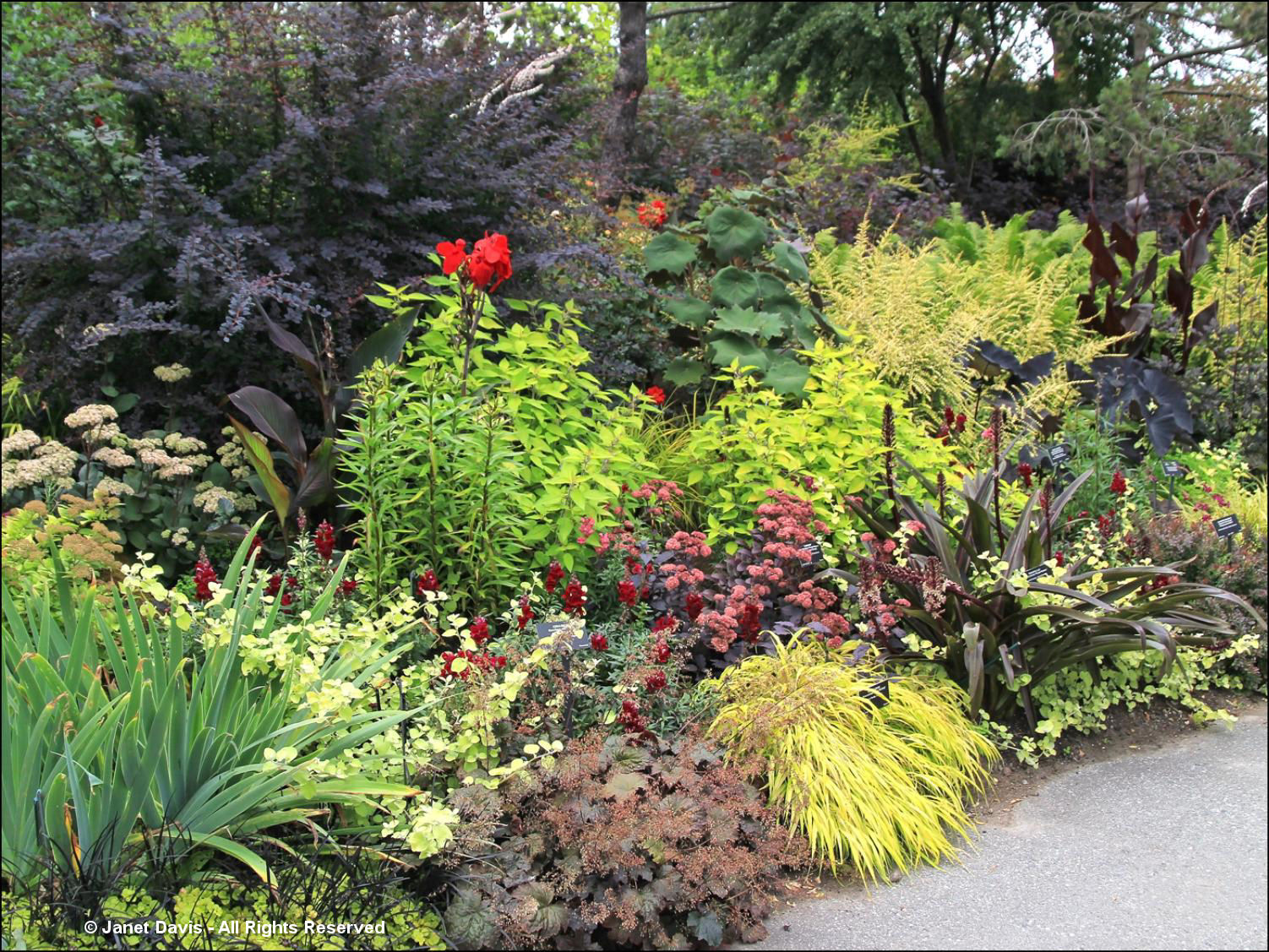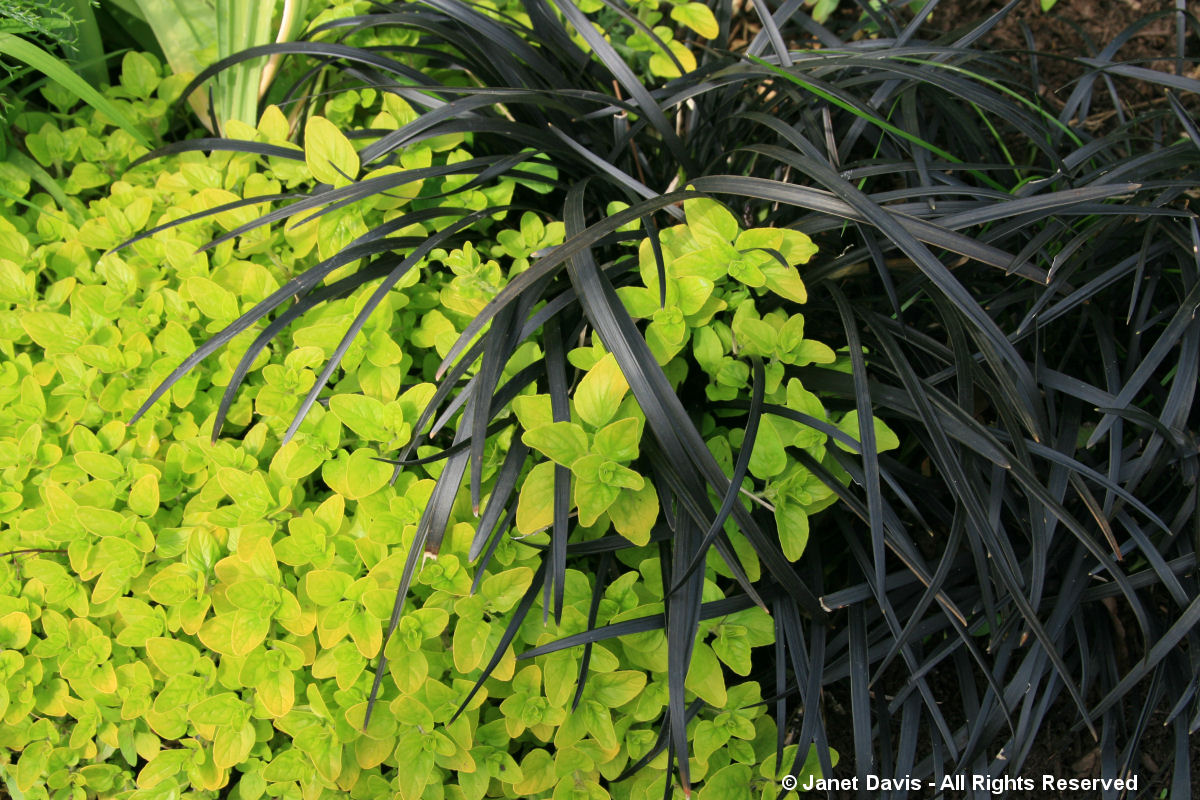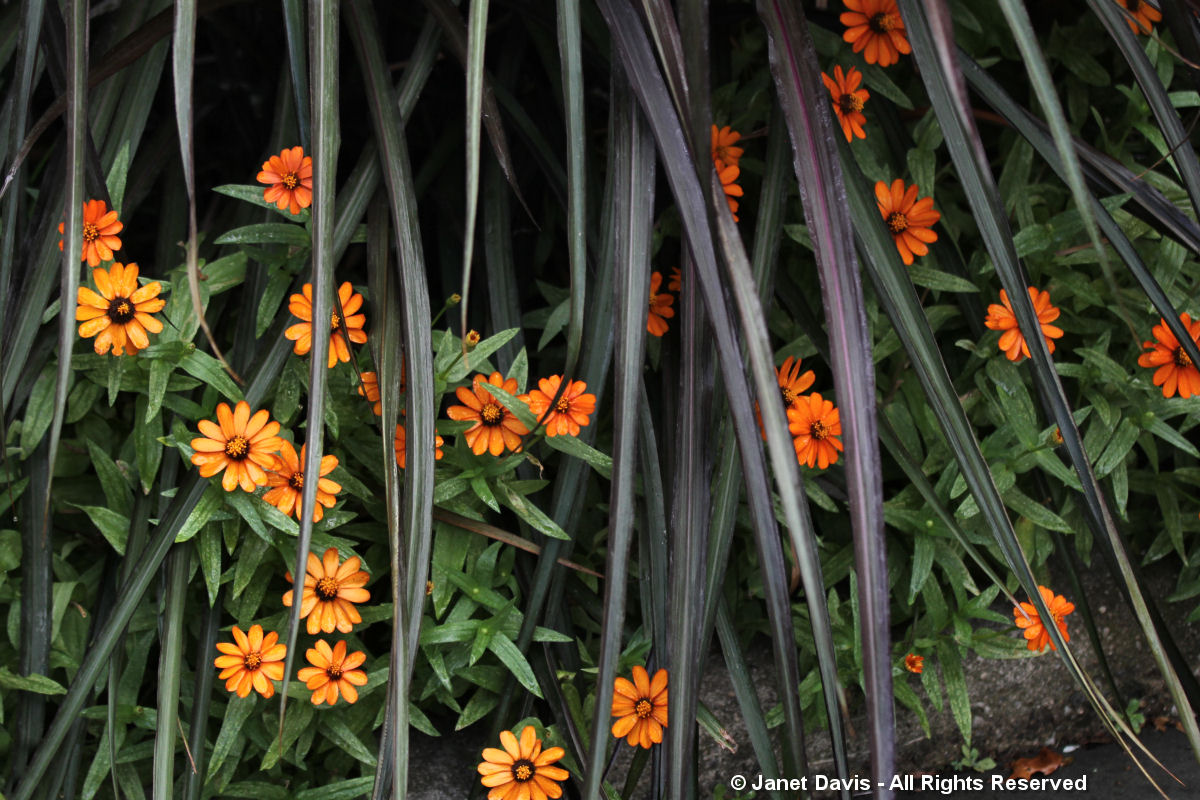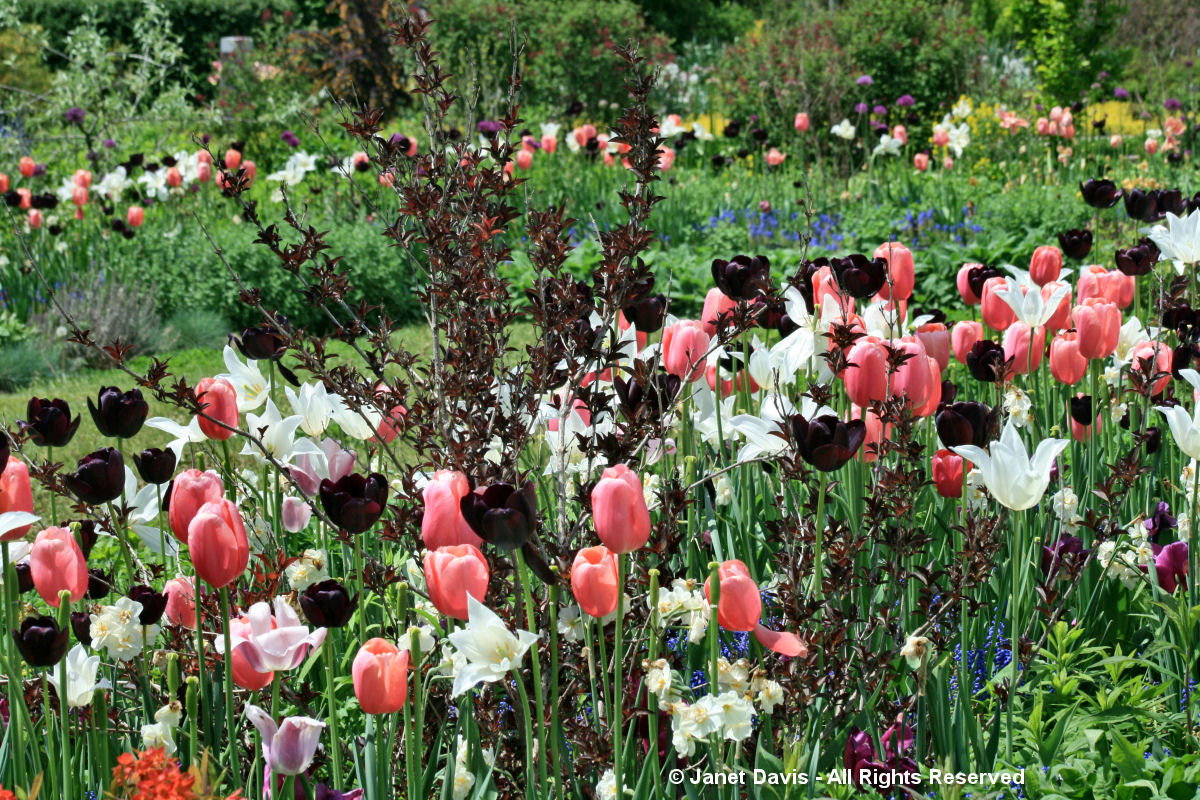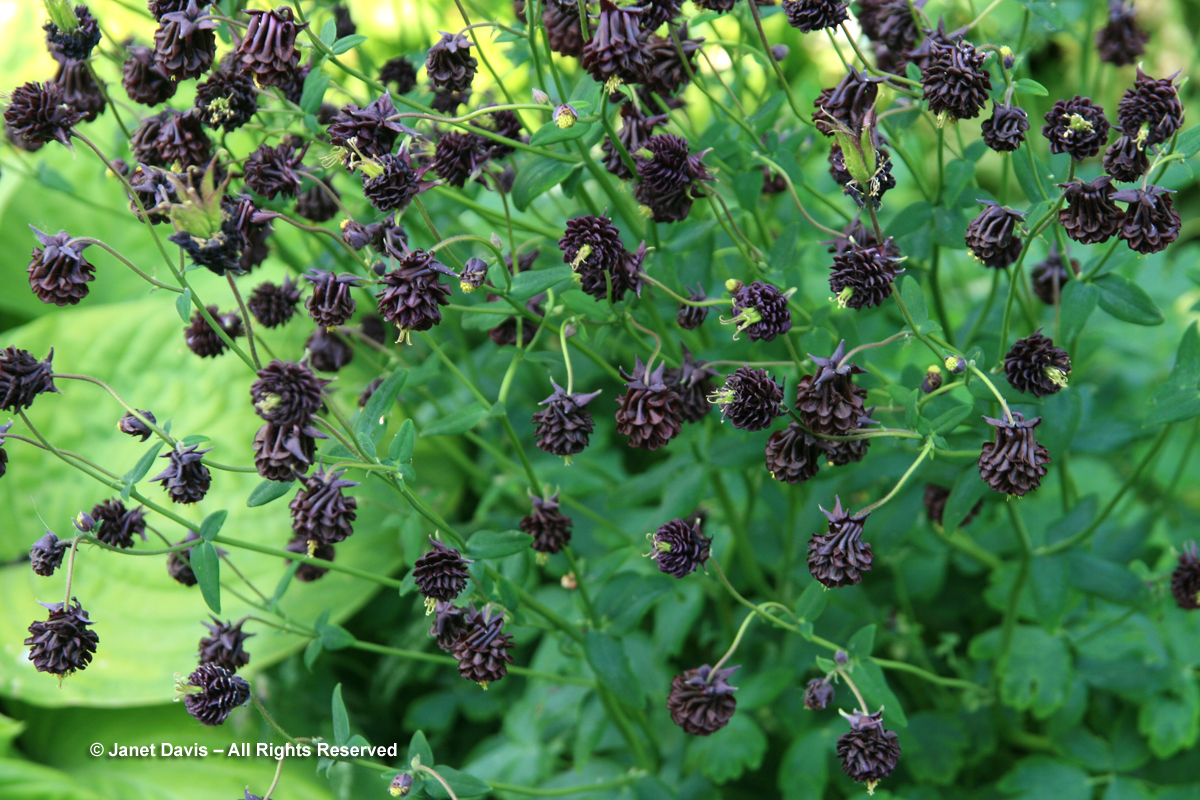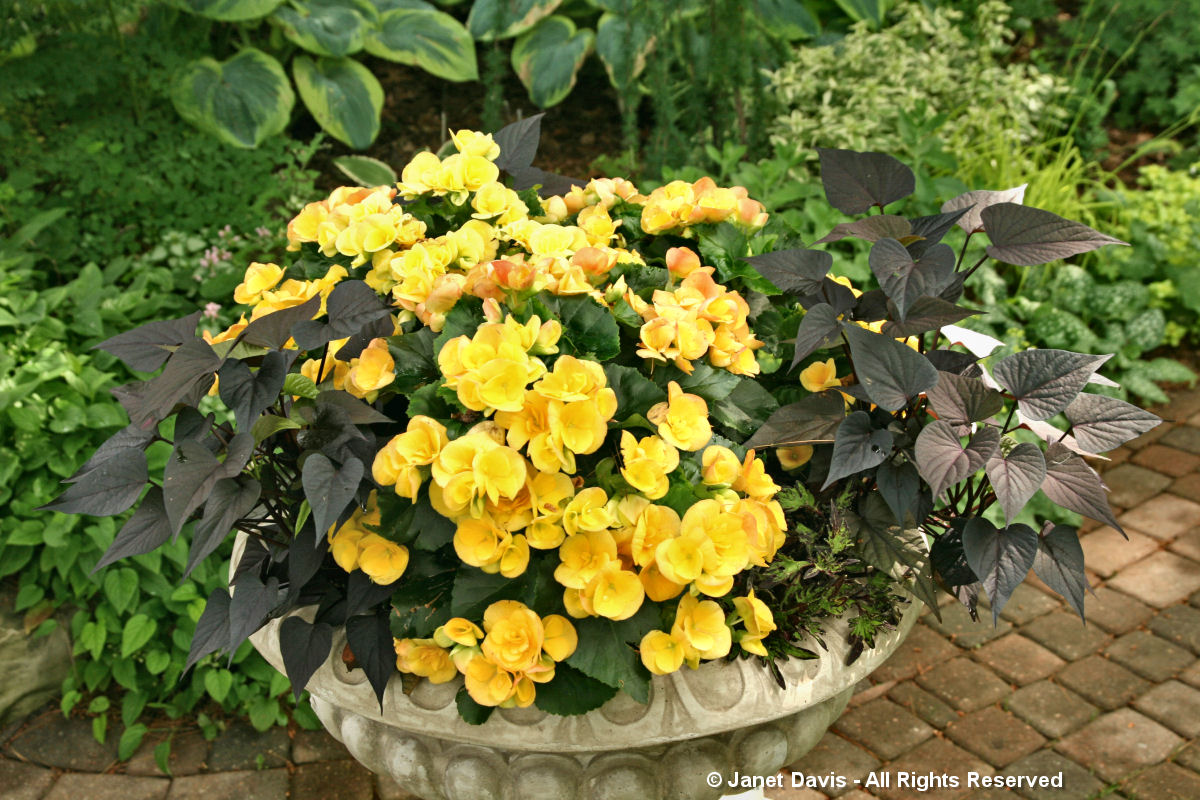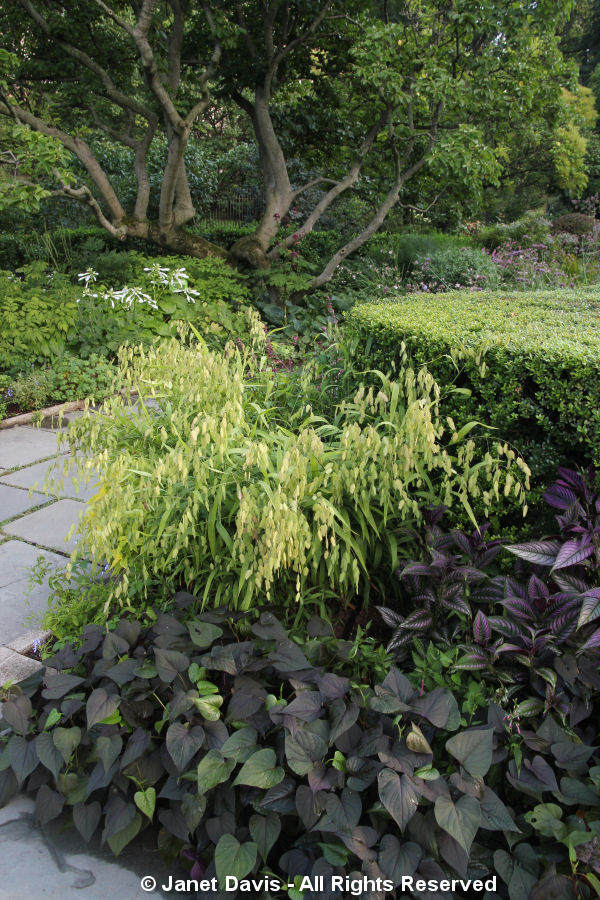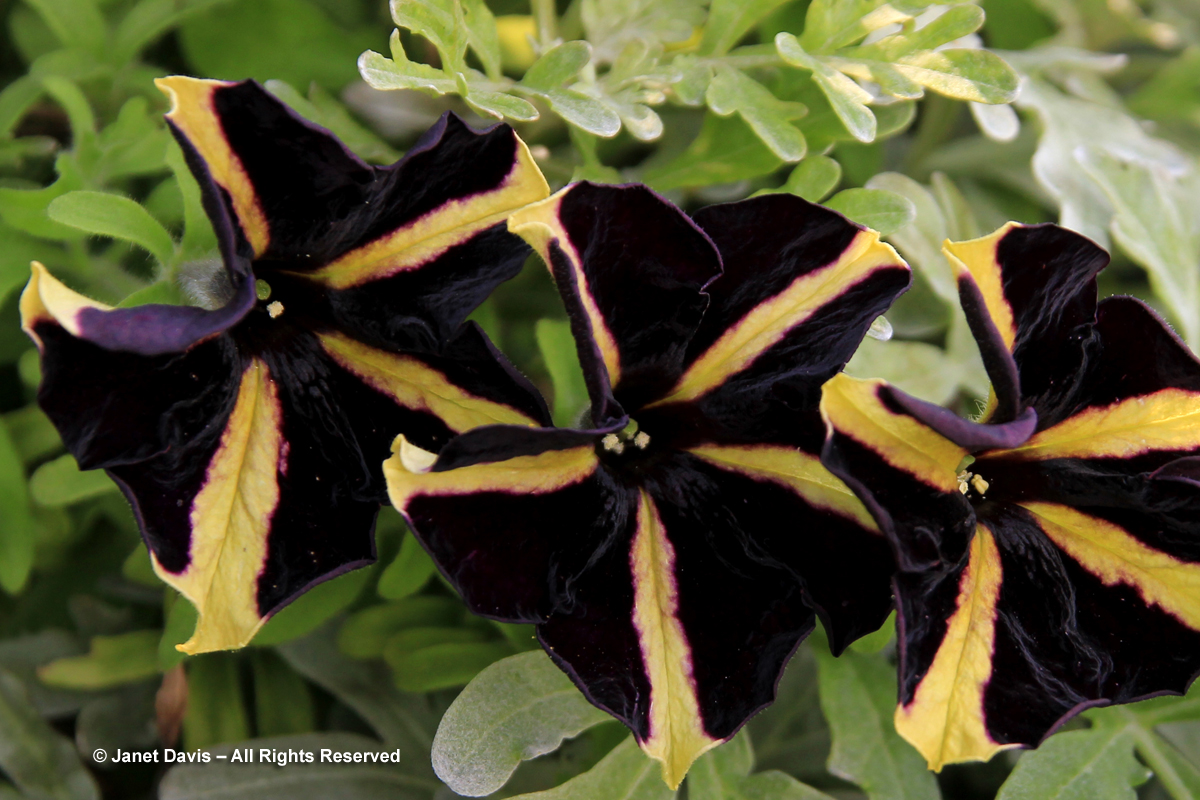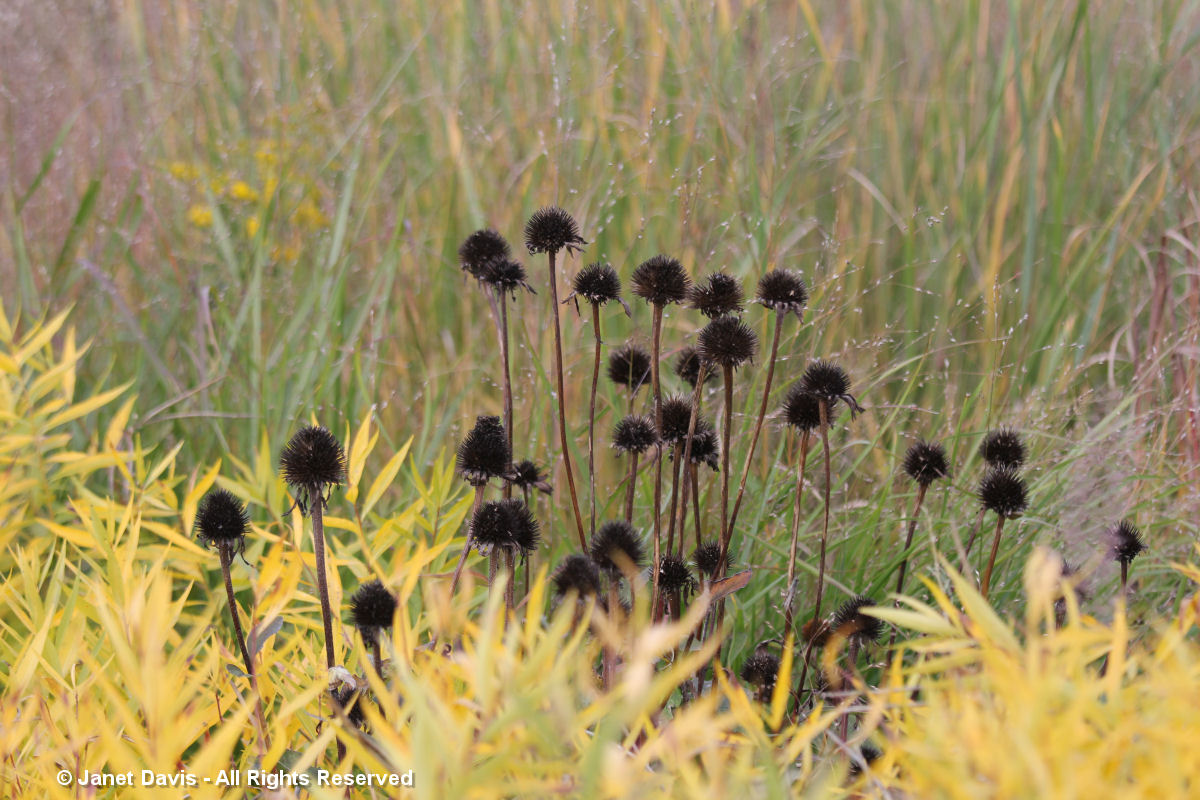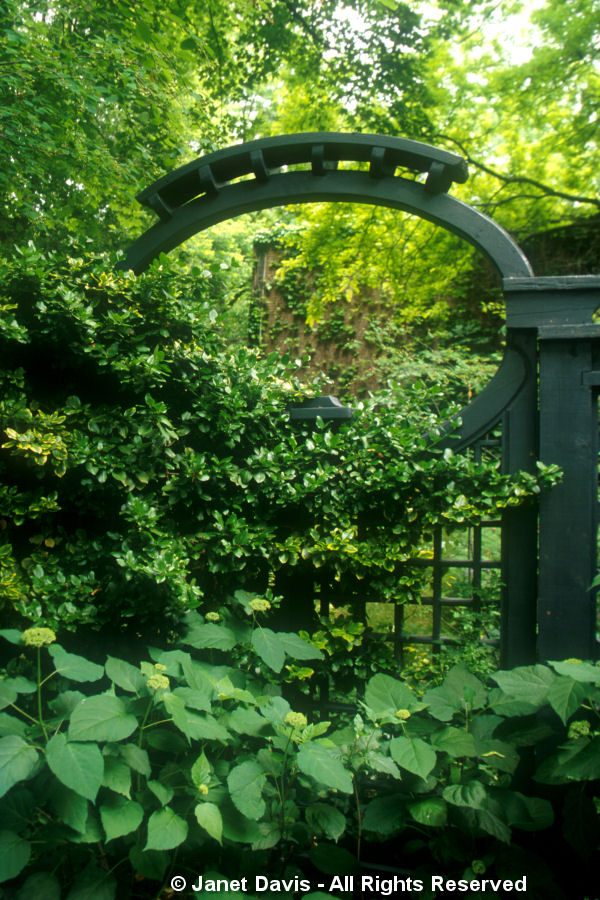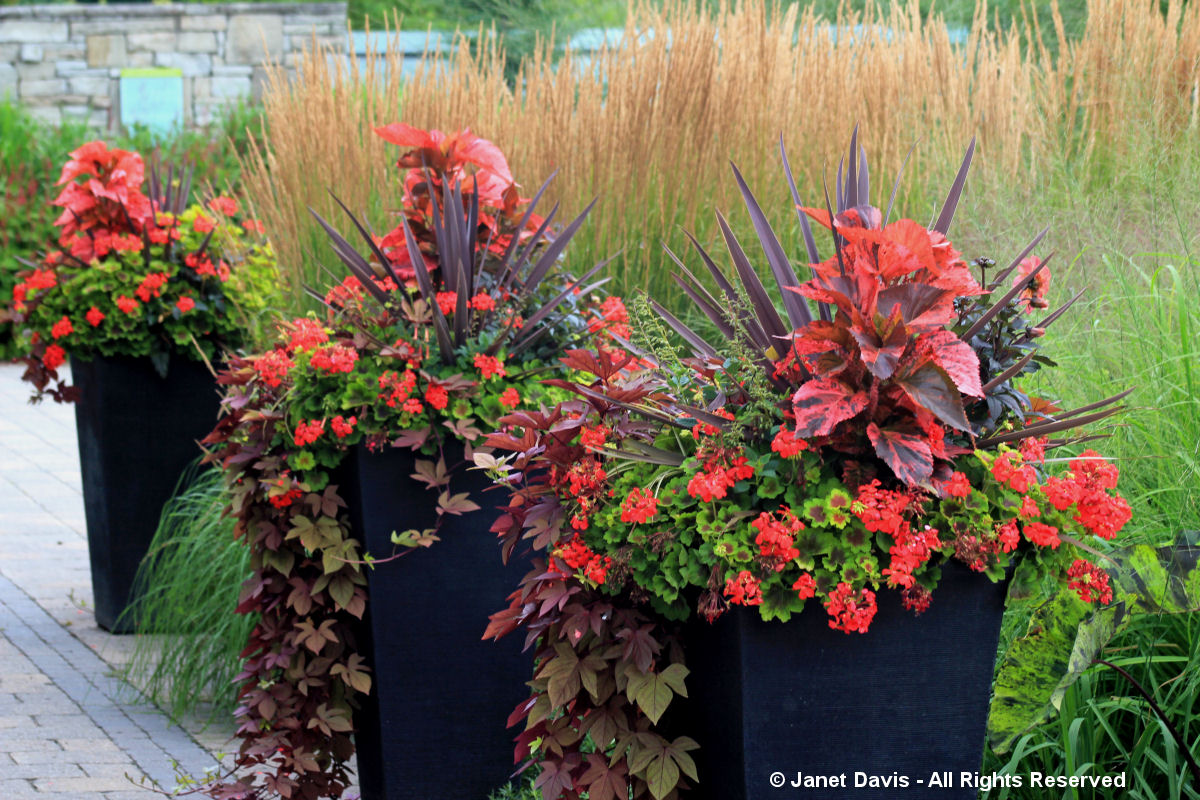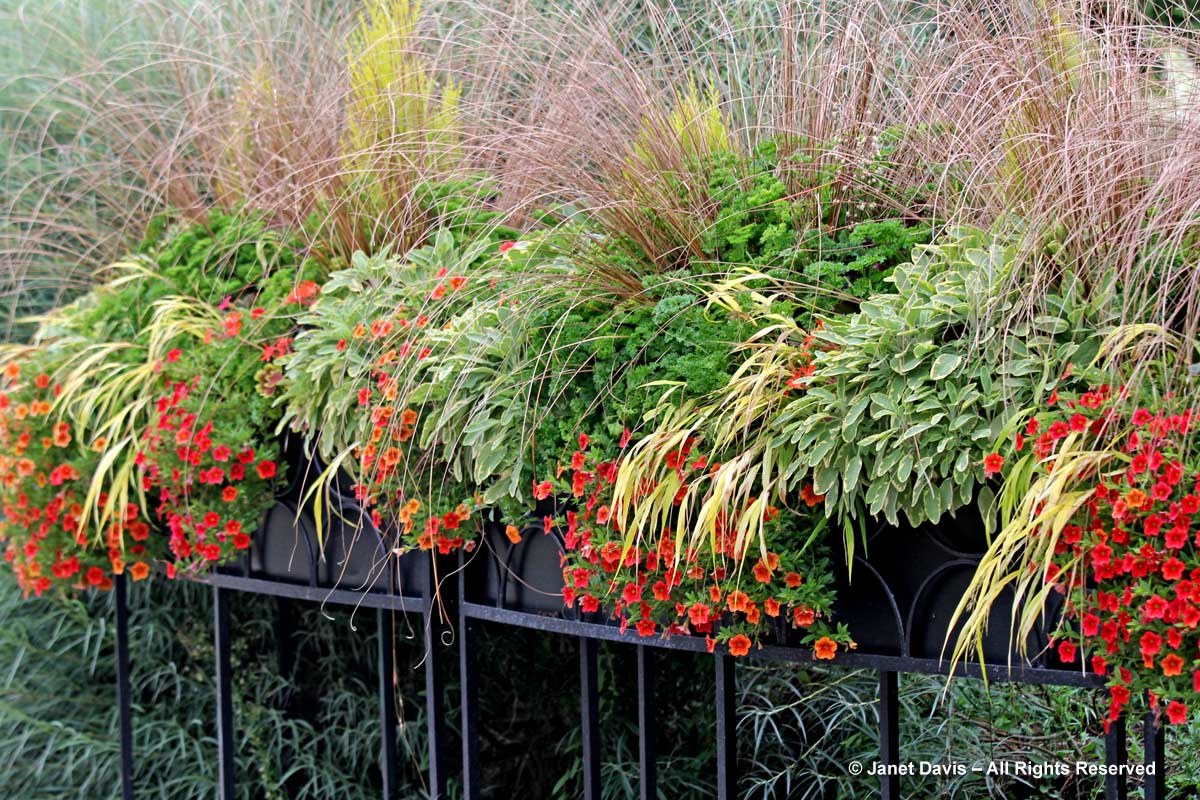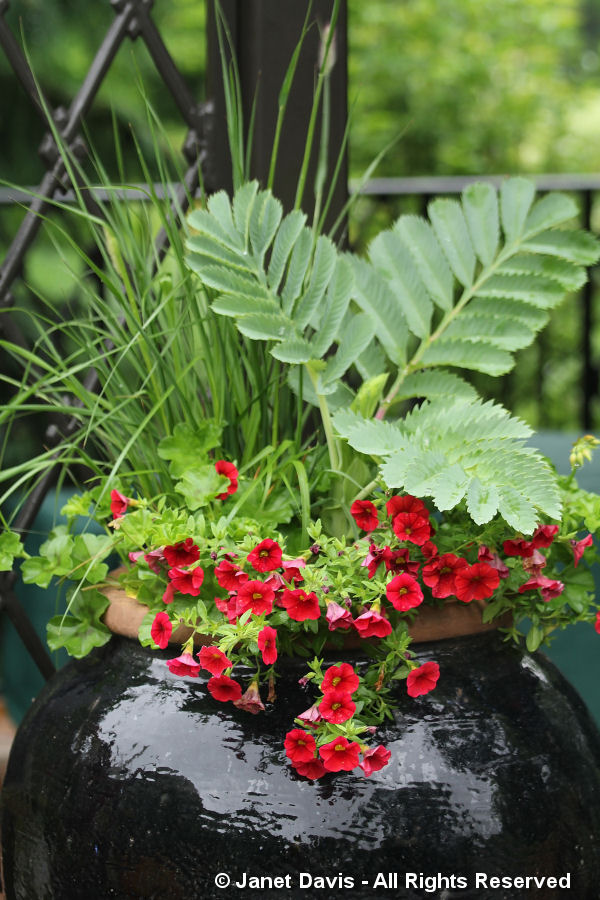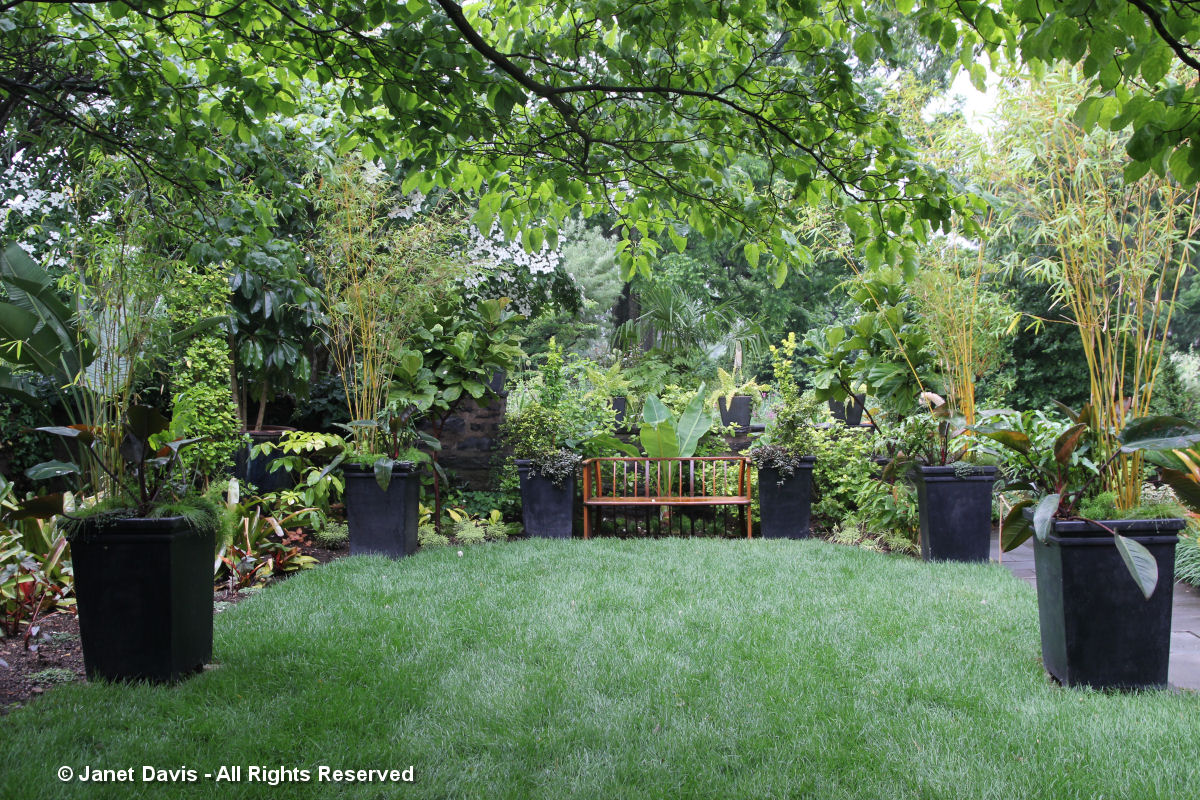The organizers of our Puget Sound Garden Fling this July chose the perfect garden in which to let us gather as a group, feet tired from a day of touring, glasses of wine in hand, to marvel at a textural, art-filled garden sculpted from a steep hillside and appointed with sleek, beautiful outdoor furnishings. As a lover of colour, I was wowed by the garden of Mac Gray and Meagan Foley overlooking Tacoma’s Commencement Bay — and I loved everything about this dramatic, chartreuse-black combination on the terrace.
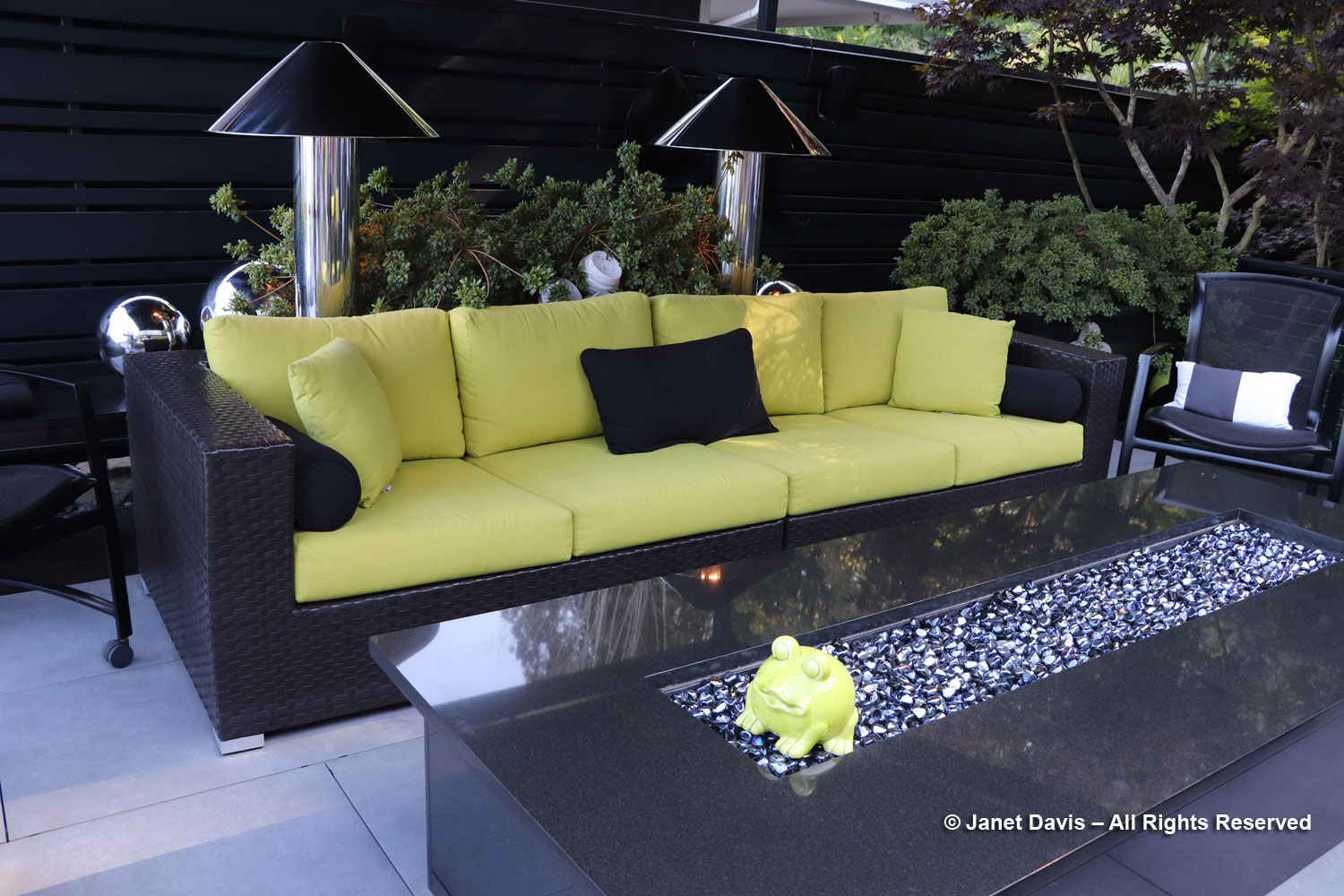
It made for a very convivial setting!

Though black as an attractive finish for fences and decorative features is now being seen more often, this garden used it in diverse ways, like this sleek wall fountain adding its own splashing soundtrack to our party.
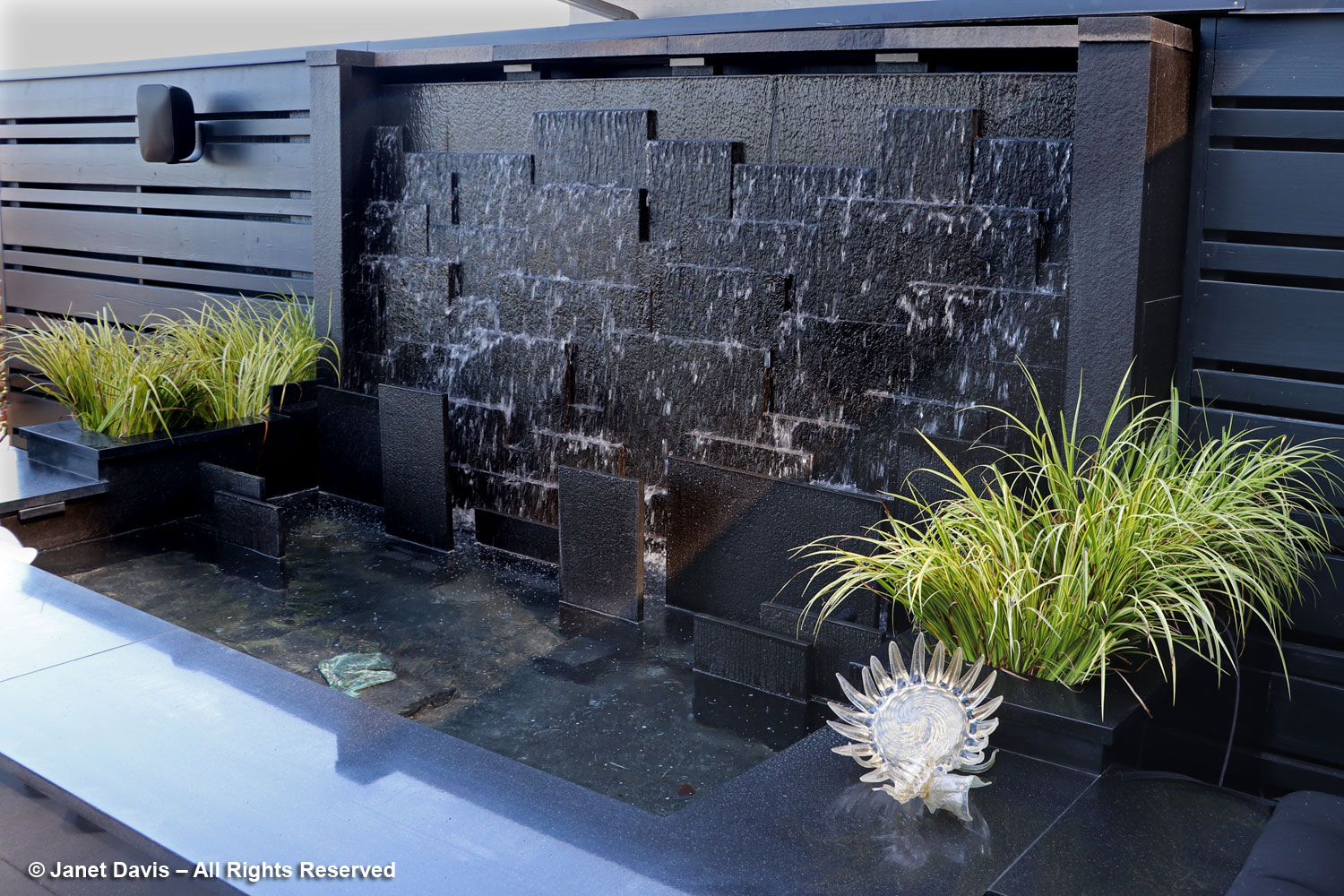
Black continues to be a unifying theme in the pool at the base of the hillside garden where a herd of hippos meander along the shore and a sculptural black fountain creates its own music beneath a massive gunnera, its strong stems echoed in orange spikes.

The plant colour palette is mostly restricted to greens with chartreuse Japanese forest grass (Hakonechloa macra ‘All Gold’) creating luminous leafy fountains here and there. Pieces of art are nestled into the rocks that form the hillside landscape while also retaining the steep slope. At the top of the hill near a copse of white-trunked birches is a massive Stonehenge-like sculpture.

Black planters add to the garden’s dark touches.
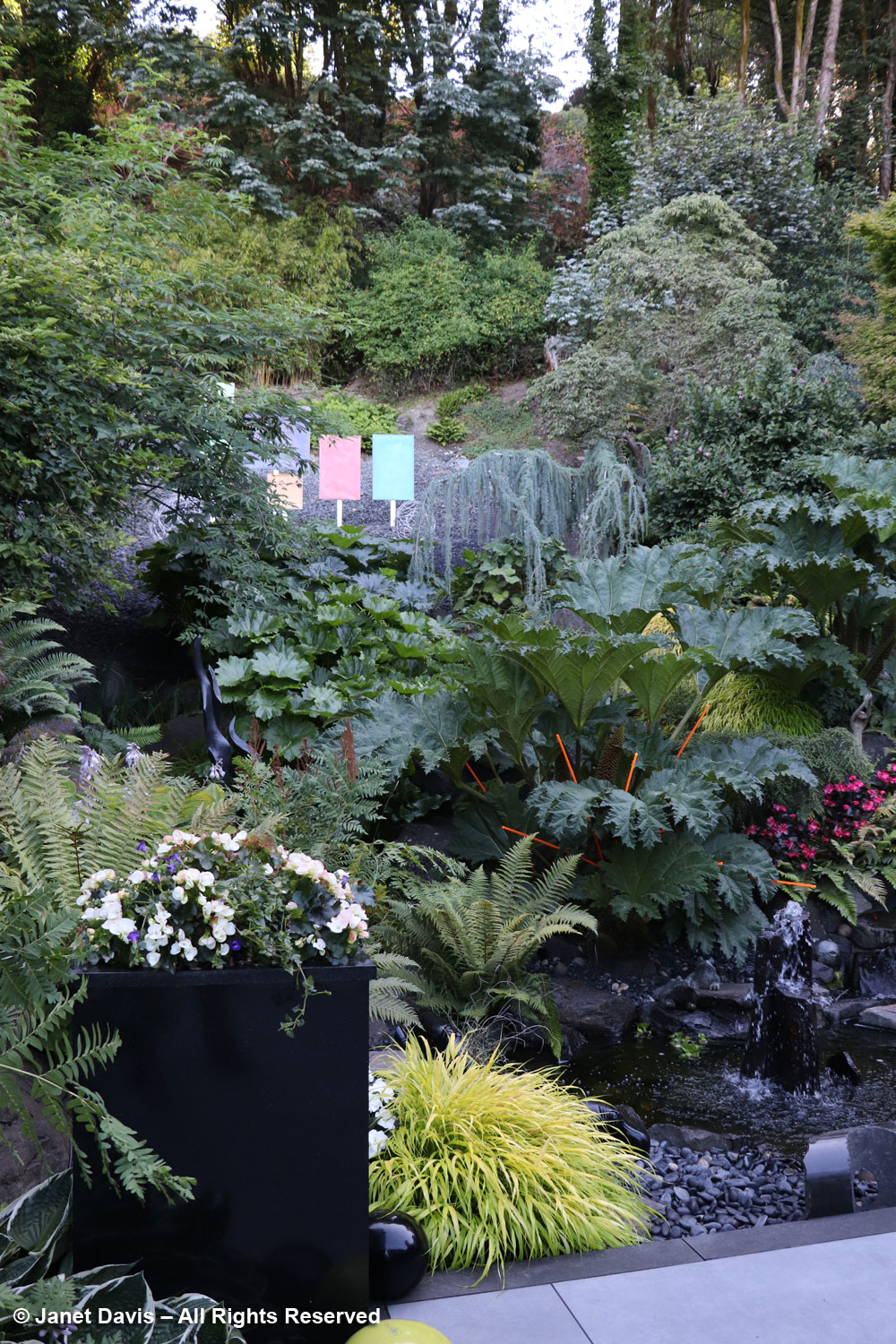
‘All Gold’ Japanese forest grass (Hakonechloa macra) is one of the best grasses for all-season chartreuse colour. It prefers damp soil and is perfect for a pondside planting.
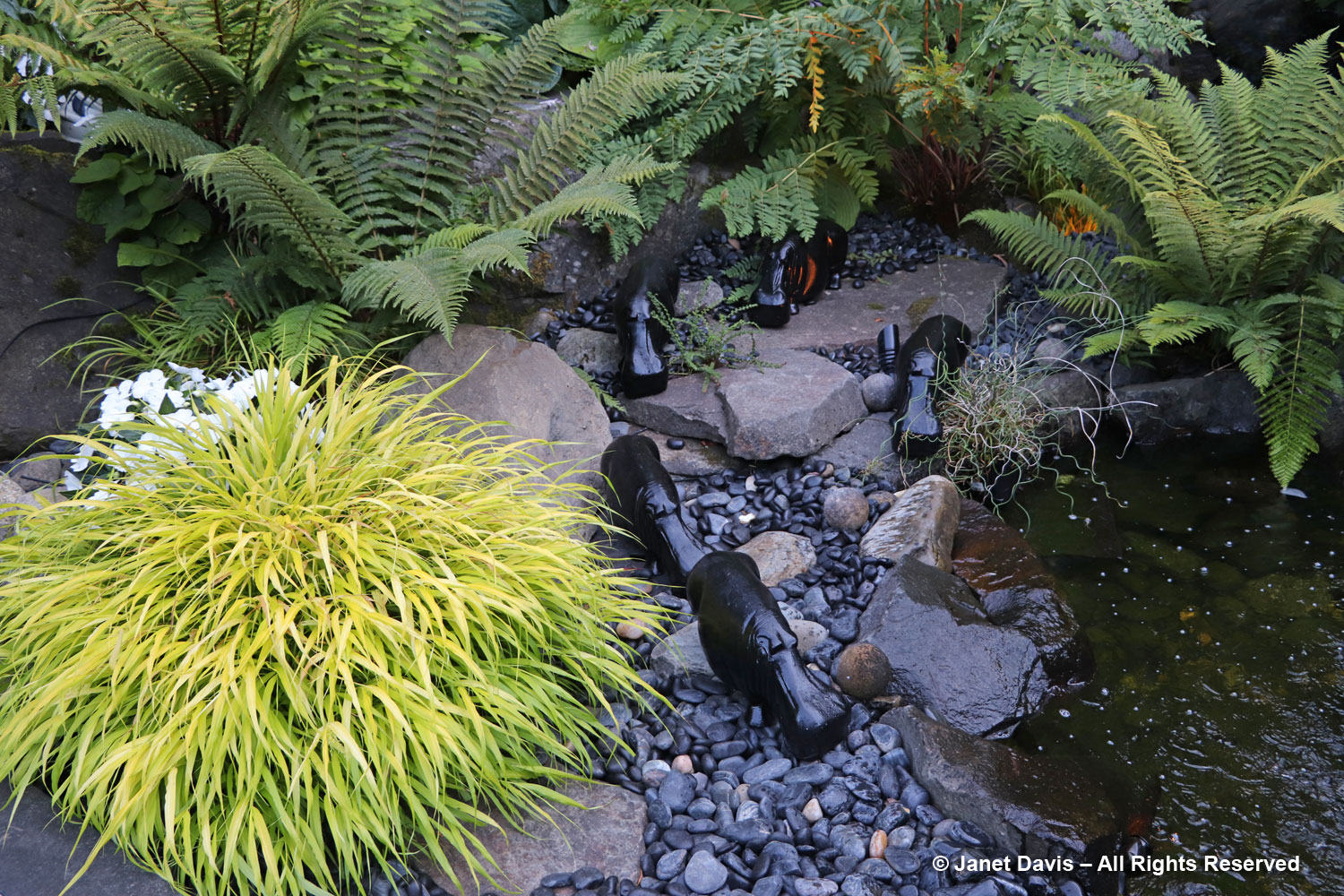
Flowers come and go, say seasoned garden designers, but foliage is king. Here we see a compact Japanese maple adding a note of wine to the many greens.
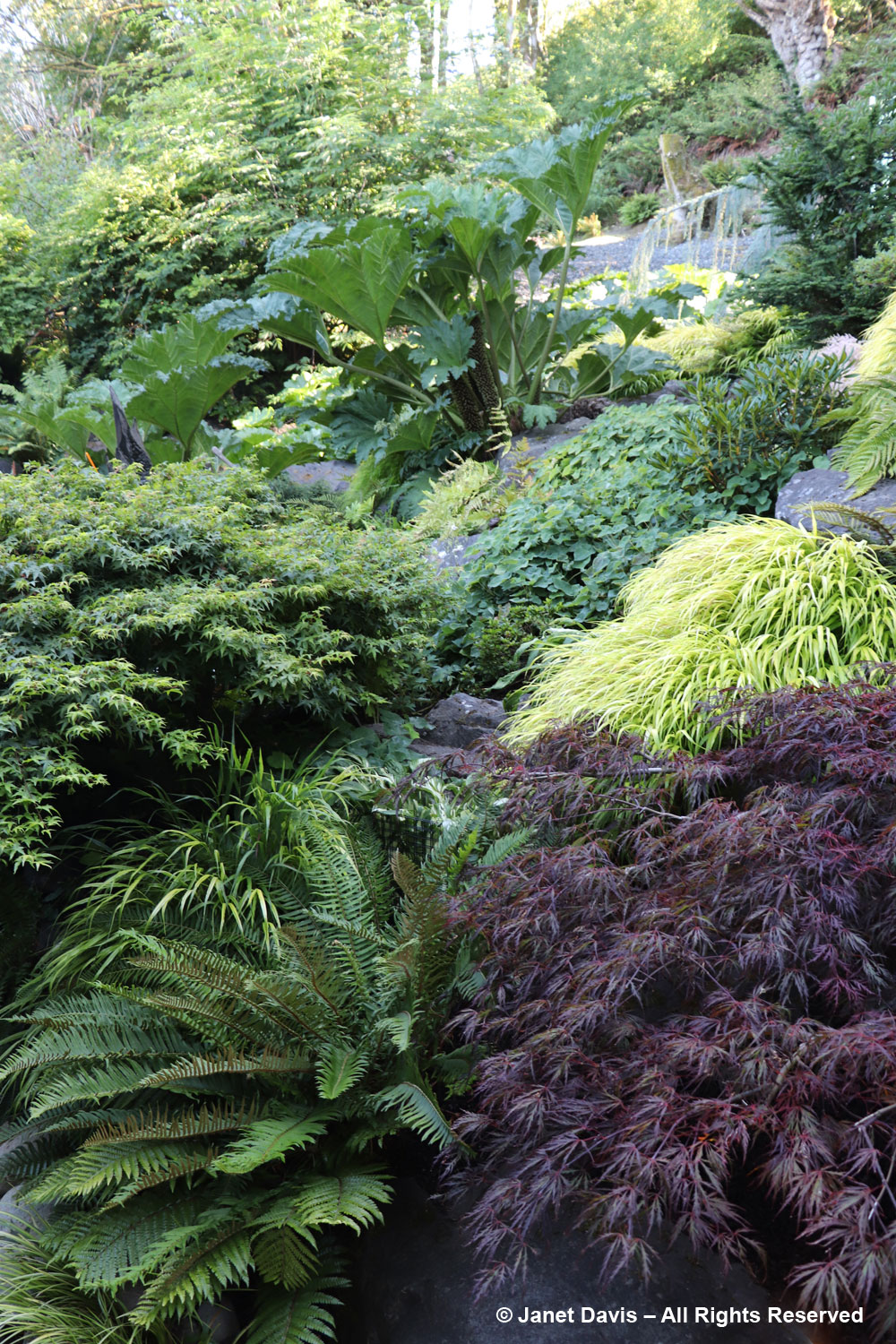
Hostas and sedges (Carex spp.) enjoy the moist conditions in the lower slope.

Higher up, a chartreuse pot lifts colourful shade-lovers above the green foliage plants.

Everywhere are touches of chartreuse and black, like these glazed garden balls tucked below ferns.
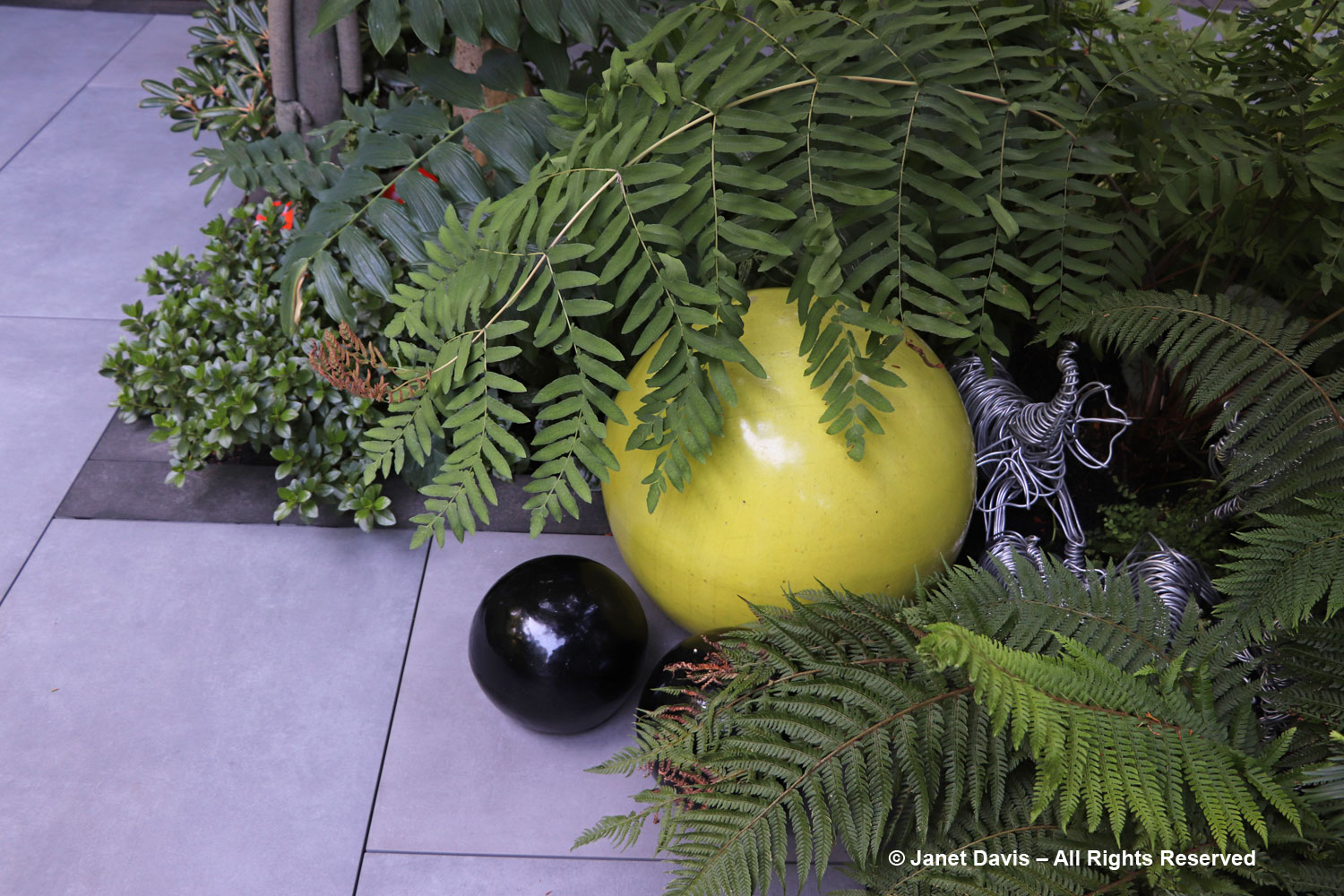
The motif seems to be plants + art, including these interesting scrolls in the tile below the shield ferns (Polystichum spp.).
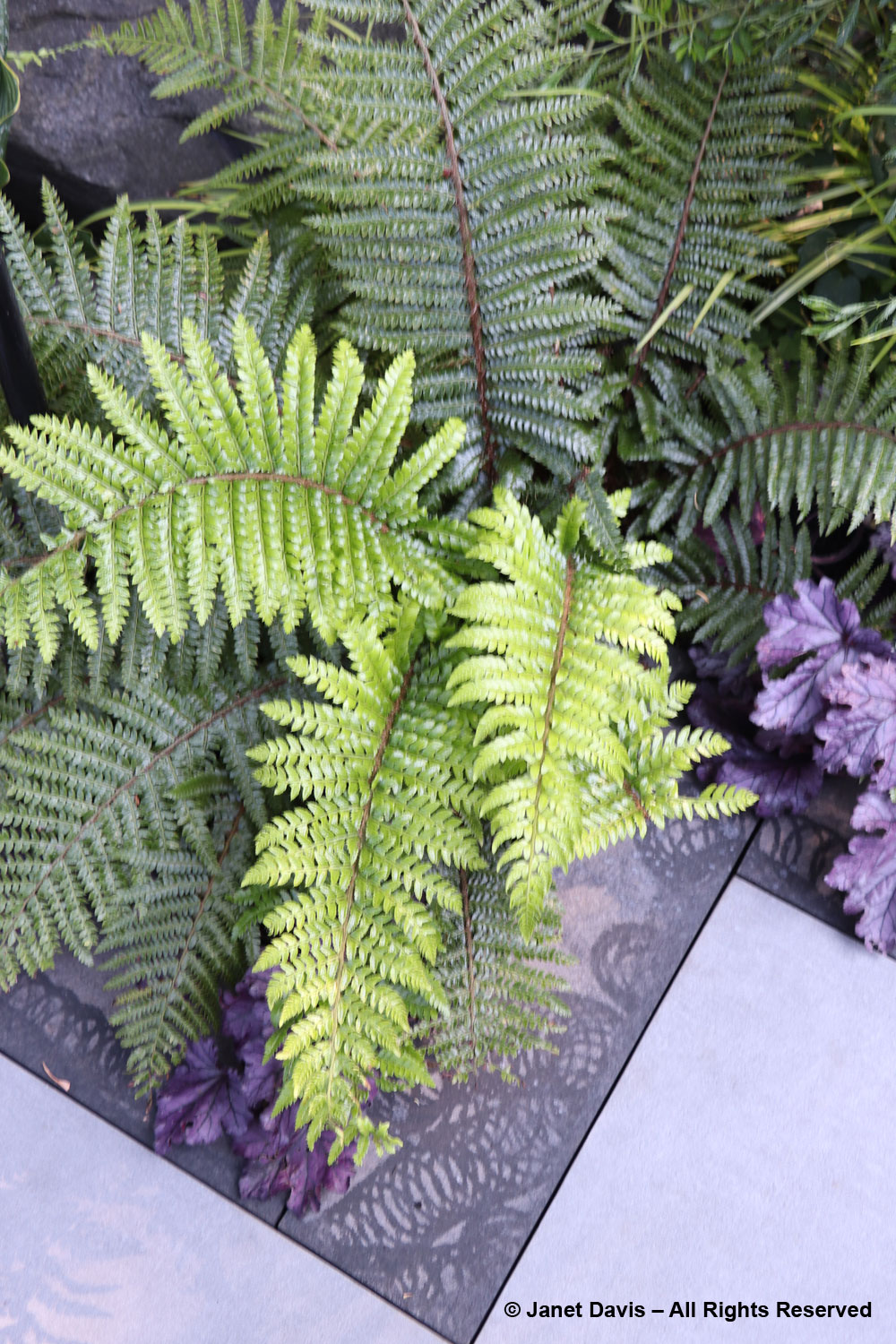
Standing on the terrace sipping my wine, I was transfixed by a semi-circular black sculpture glimpsed through the pendulous boughs of a weeping willow. When I asked Meagan Foley about it, she said she had looked at that part of the hillside and felt it needed a strong piece of art – and this was the beautiful result.
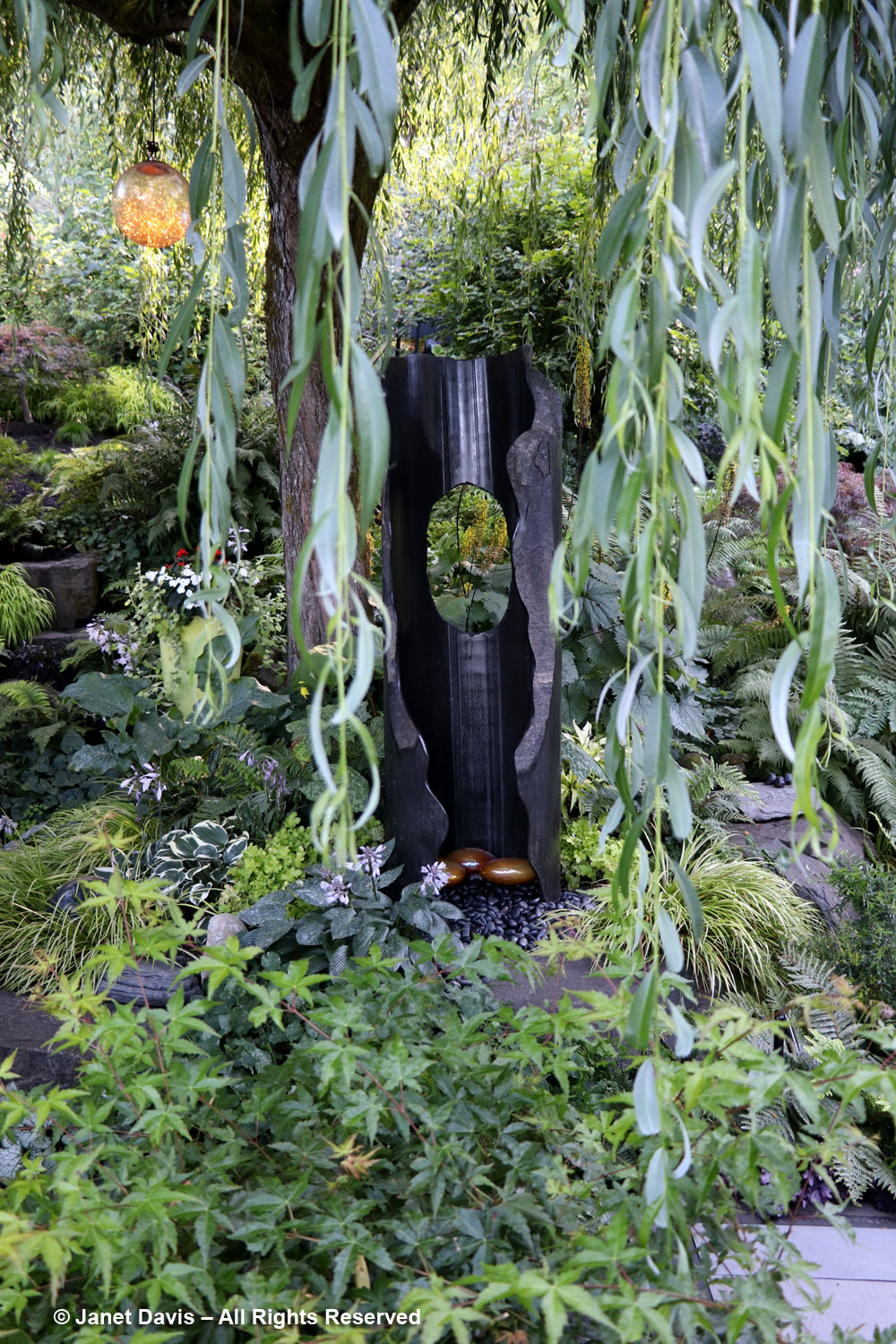
Focusing in on the sculpture, I saw that it was cut out to perfectly frame the yellow spikes of ligularia up the slope.
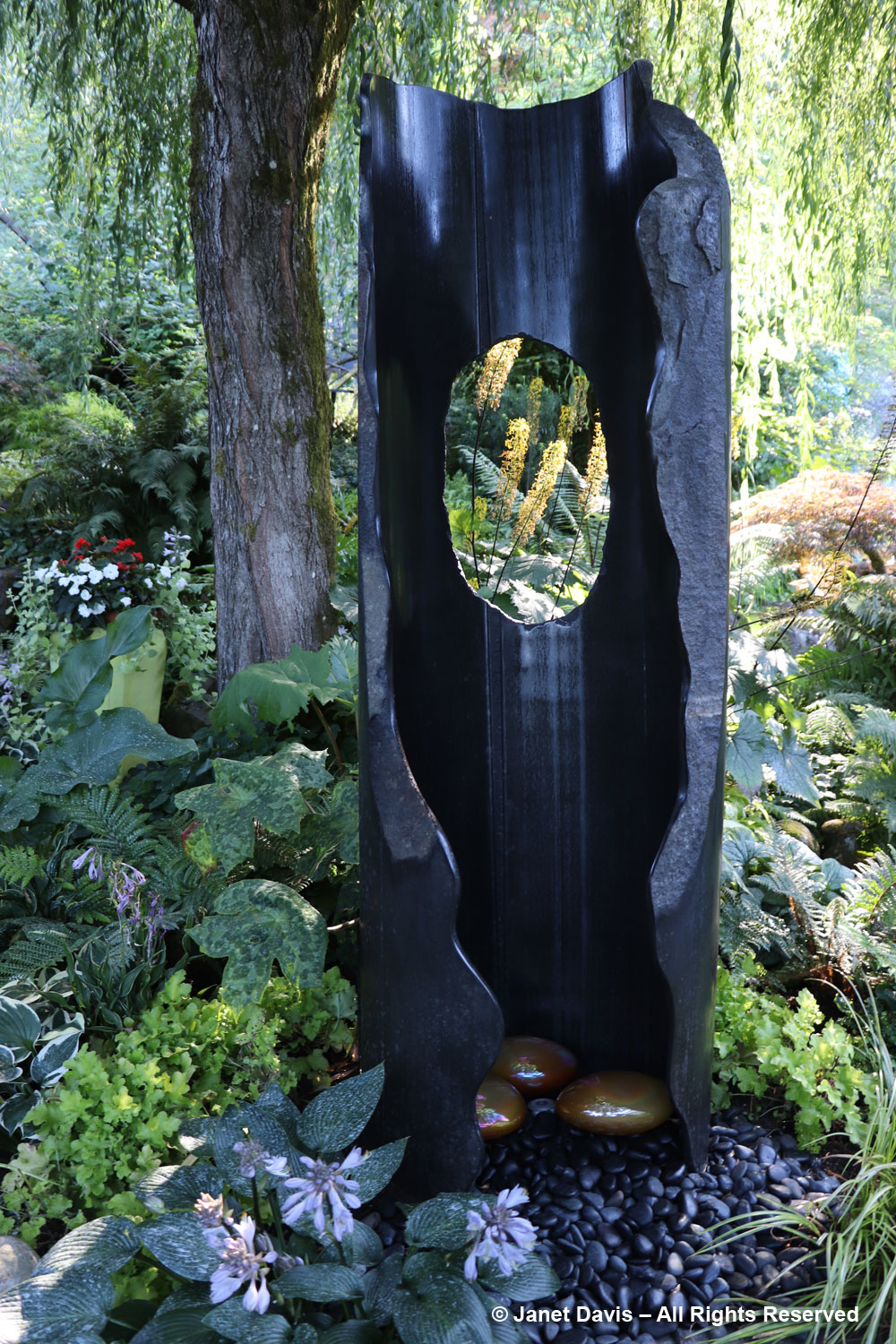
Not all the artistic touches are one-of-a-kind sculpture, however. There is space in the garden for pure fun, too.

Heading to the front of the house and a balcony overlooking the front garden and Puget Sound, I found more nods to black and chartreuse in the ceramic bamboo culms and furnishings. I imagine this is a wonderful spot for a morning coffee, gazing at the hummingbirds under the Japanese maple and watching the trains pass by on the shore of Commencement Bay. Thank you Meagan and Mac, for sharing it with us.

**********
Do you love charteuse plants too? Here’s a blog I did with lots of ideas for splashing a little of that sunshine-green hue in your garden: Cordial Charteuse on the Garden Menu
And here are my previous blogs on Puget Sound Gardens:
The Wonders of Windcliff – the Indianola garden of famed plant explorer Dan Hinkley and architect Robert Jones
A Return to Heronswood – nineteen years later, I returned to this resurrected oasis on Kitsap
A Garden of Endearing, Eclectic, Exuberant Refuge – the fabulous Seattle garden of Daniel Sparler and Jeff Schouten
In Camille Paulsen’s Puyallup Garden – a plantswoman’s wonderful garden overlooking mighty Tahoma


